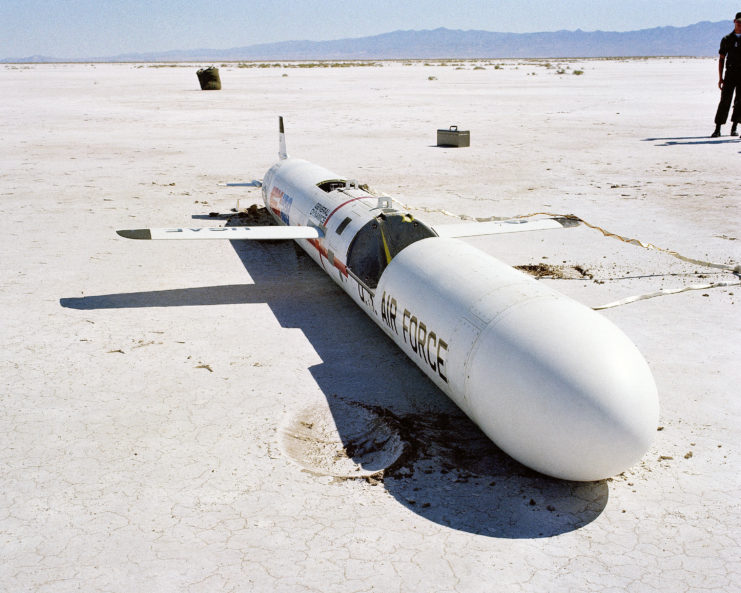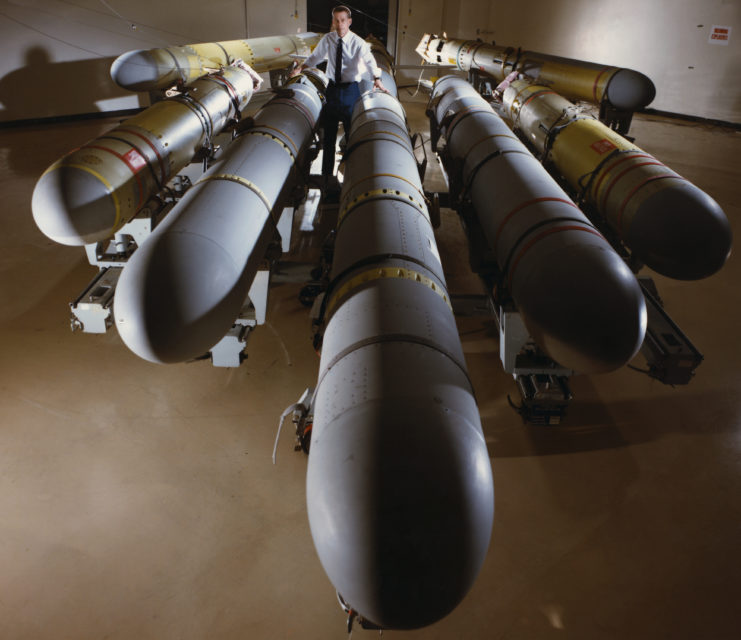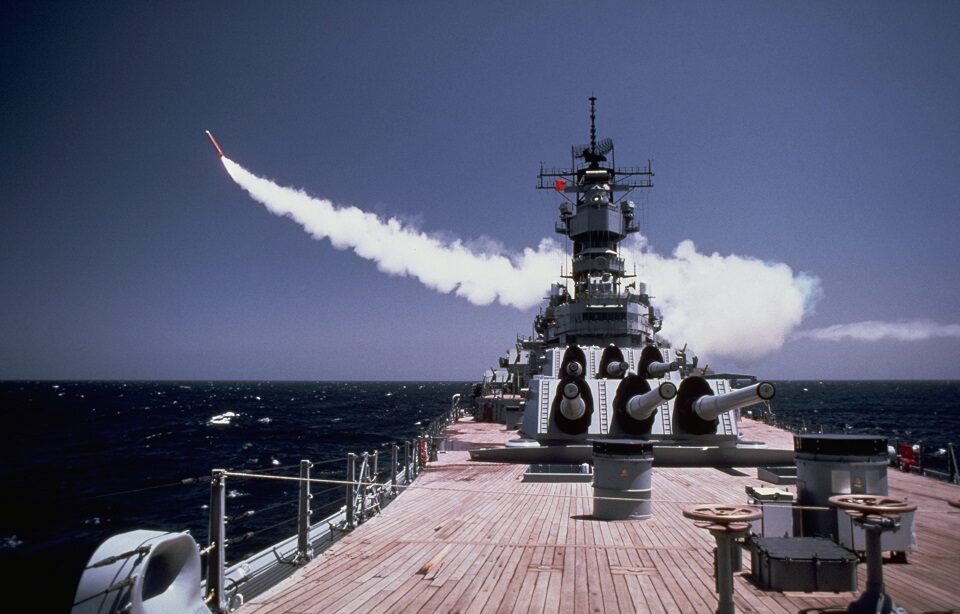The Tomahawk missile first joined the US Navy fleet in 1983 and following multiple recertifications, has continued to be an integral weapon for ship and submarine-based land-attack operations. Although it has been frequently employed since its creation, the Tomahawk missile is most notable for its use in the Persian Wars.
Tomahawk Missile’s Feature Some Incredible Capabilities
Priced at approximately $1 million apiece, the Tomahawk missile packs a major punch. It can reach a speed of up to 550 miles per hour, reach a distance of 700 to 1350 nautical miles depending on which variant of the missile is fired, and successfully reach its target even in heavily defended air space.

The missile can carry 160 bomblets, a 1,000-pound conventional warhead, or a W80 nuclear warhead. Using GPS, inertial navigation, and terrain contour matching, the Tomahawk has the ability to hit within ten yards of its intended target. It can also perform evasive maneuvers at extremely low altitudes, allowing it to take out diverse targets and do so without causing much collateral damage.
Tomahawk Missiles are built for Mods
The physical look of the weapon is intended to resemble a “flying torpedo”, which it does nicely. The look of the missile has remained pretty much the same since its beginning. The slim design allows the missile to be compatible with vertical launchers on surface warships as well as torpedo tubes on submarines.

The overall shelf life of the missile is 30 years and requires recertification at the time of expiration. Recertification allows ample opportunity to apply modifications to the missile that increase its lethality while also ensuring that the missile is still ready for combat.
The Tomahawk missile was built with a modular design, which makes internal modifications and upgrades relatively simple. Specifications that work efficiently can remain in the missile, while specifications that need to be replaced are done so without affecting the rest of the internal makeup of the missile.

Block Va/Vb
Block Va allows this variant of the Tomahawk to strike moving targets at sea. It has a new seeker that is capable of accurately identifying and targeting warships as far as 1,000 miles away. This variant brings the US Navy up to speed with Russian and Chinese adversaries that were already equipped with long-range anti-ship munitions.

Block Vb has a joint multi-effects warhead that allows the Tomahawk to hit more diverse land targets. It is a hard-target kill variant that is capable of destroying densely-constructed enemy assets which previously would have required more specialized munitions.
International interest
Beyond its use by the US, the Tomahawk missile has also been used by the United Kingdom’s Royal Navy in a number of operations, and now all Royal Navy fleet submarines are Tomahawk missile capable. Additionally, there had previously been expressed interest in acquiring the missile by countries like Spain, the Netherlands, Canada, and Australia, though many had not followed through with their orders.
